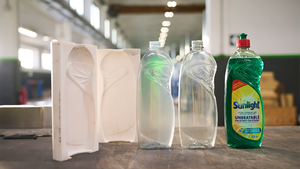Changes afoot for safety assessments of food packaging
April 14, 2016
The European Food Safety Authority (EFSA) has recommended changes to how the safety of food-contact materials, including packaging materials, is assessed. These changes include (1) implementing a tiered approach to the amount of toxicological data required based on human exposure, (2) establishing four categories to estimate consumer exposure and (3) taking into account the migration of non-intentionally added substances (NIAS).
The recommendations are included in the report: “Recent developments in the risk assessment of chemicals in food and their potential impact on the safety assessment of substances used in food-contact materials.” The report was prepared by EFSA’s Panel on Food Contact Materials, Enzymes, Flavourings and Processing Aids (CEF). A draft opinion was published in July 2015 and the final report took into account the comments received during a three-month public consultation on the draft.
EFSA evaluates the safety of certain substances prior to their authorization for use in food-contact materials. For example, petitions submitted to the European Commission (EC) to add a new monomer or additive to the Plastic Regulation’s ((EU) No. 10/2011) positive (or Union) list are initially reviewed by EFSA, which will issue a formal opinion on the safety of the substances with respect to their use with food and any limitations that should be observed. The current guidelines on this risk assessment process and the corresponding data requirements are based on guidelines developed by the Scientific Committee on Food (SCF) in 2001.
The CEF report recommends establishing four default food consumption categories to estimate consumer exposure. They would be approximately 9, 5, 3, and 1.2 times higher than the current default (a person may consume daily up to 1 kg of food in contact with 6 dm2 of the relevant FCM, 17 g/kg of body weight (bw) per day). The new default food categories assumes higher exposure levels based on food category and age of the consumer, particularly for infants and toddlers, according to the CEF panel. The panel explained that EFSA’s Comprehensive European Food Consumption Database is now available to assist in determining consumer exposure.
With respect to toxicology data, EFSA’s CEF panel proposed three threshold levels of human exposure (1.5, 30 and 80 mg/kg of bw per day) as triggers for requiring additional toxicity data. The panel also suggested that the toxicity data thresholds would apply to all migrating substances, both intentionally and non-intentionally added substances.
CEF also suggested that the first tier—genotoxicity testing—should be required for all migrating substances, even if the migration of those substances into food results in very low exposures. However, the panel did not rule out the use of alternative methods to animal testing, including for the assessment of genotoxicity of NIAS.
“This opinion reflects both advances in science and our experience over the last decade in applying existing EU guidelines,” says Dr. Laurence Castle, a member of EFSA’s CEF Panel and chair of the working group that developed the opinion, in a release on the report. (A copy of the release, with a link to the full report, can be found at www.efsa.europa.eu/en/press/news/160128.)
The next step is for the EC and Member State authorities to discuss the recommendations. After discussions with the Member States, the EC will then advise EFSA on the necessary levels of protection for consumers. EFSA will then update the guidelines on data requirements for safety assessments of substances in food-contact materials.

Author George Misko is a partner at Keller and Heckman. Founded in 1962, the respected law firm has a broad practice in the areas of regulatory law, litigation and business transactions, serving both domestic and international clients. Reach him at [email protected].
******************************************************************************
See a host of new ideas in packaging machinery, materials and more at EastPack 2016, June 14-16, in New York City.
About the Author(s)
You May Also Like


